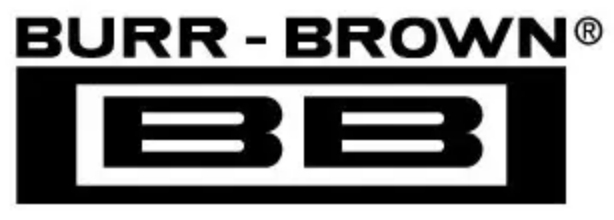+V
CC
Unipolar
Offset
Adjust
R
2
10
100Ω
100kΩ
–V
CC
100Ω
12
R
3
Analog
Input
10V
Range
13
Bipolar Offset
ADS774
2.5V
8
Ref Out
Ref In
Full-Scale
Adjust
R
1
100kΩ
connected either to Pin 9 (Analog Common) for unipolar
operation, or to Pin 8 (2.5V Ref Out), or the external
reference, for bipolar operation. Full-scale and offset adjust-
ments are described below.
The input impedance of the ADS774 is typically 50kΩ in the
20V ranges and 12kΩ in the 10V ranges. This is signifi-
cantly higher than that of traditional ADC774 architectures,
reducing the load on the input source in most applications.
INPUT STRUCTURE
Figure 12 shows the resistor divider input structure of the
ADS774. Since the input is driving a capacitor in the CDAC
during acquisition, the input is looking into a high imped-
ance node as compared with traditional ADC774 architec-
tures, where the resistor divider network looks into a com-
parator input node at virtual ground.
To understand how this circuit works, it is necessary to
know that the input range on the internal sampling capacitor
is from 0V to +3.33V, and the analog input to the ADS774
must be converted to this range. Unipolar 20V range can be
used as an example of how the divider network functions. In
20V operation, the analog input goes into pin 14. Pin 13 is
left unconnected and pin 12 is connected to pin 9, analog
common. From Figure 12, it is clear that the input to the
capacitor array will be the analog input voltage on pin 14
divided by the resistor network (42kΩ + 42kΩ || 10.5kΩ). A
20V input at pin 14 is divided to 3.33V at the capacitor
array, while a 0V input at pin 14 gives 0V at the capacitor
array.
The main effect of the 10kΩ internal resistor on pin 12 is to
provide the same offset adjust response as that of traditional
ADC774 architectures without changing the external trimpot
values.
SINGLE SUPPLY OPERATION
The ADS774 is designed to operate from a single +5V
supply, and handle all of the unipolar and bipolar input
ranges, in either the Control Mode or the Emulation Mode as
described above. Pin 7 is not connected internally. This is
14
20V
Range
9
Analog
Common
FIGURE 10. Unipolar Configuration.
Full-Scale Adjust
R
2
100Ω
ADS774
2.5V
100Ω
R
1
12
Bipolar Offset
8
Ref Out
10
Ref In
Bipolar
Offset
Adjust
Analog
Input
10V
Range
20V
Range
13
14
9
Analog
Common
FIGURE 11. Bipolar Configuration.
The +5V supply should be bypassed with a 10µF tantalum
capacitor located close to the converter to promote noise-
free operations, as shown in Figure 2. Noise on the power
supply lines can degrade the converter’s performance. Noise
and spikes from a switching power supply are especially
troublesome.
RANGE CONNECTIONS
The ADS774 offers four standard input ranges: 0V to +10V,
0V to +20V,
±5V,
or
±10V.
Figures 10 and 11 show the
necessary connections for each of these ranges, along with
the optional gain and offset trim circuits. If a 10V input
range is required, the analog input signal should be con-
nected to pin 13 of the converter. A signal requiring a 20V
range is connected to pin 14. In either case the other pin of
the two is left unconnected. Pin 12 (Bipolar Offset) is
®
Pin 14
20V Range
42kΩ
Pin 13
10V Range
21kΩ
21kΩ
Capacitor
Array*
Pin 12
Bipolar
Offset
10.5kΩ
10kΩ
*10pF when sampling
FIGURE 12. ADS774 Input Structure.
12
ADS774

 BURR-BROWN [ BURR-BROWN CORPORATION ]
BURR-BROWN [ BURR-BROWN CORPORATION ]